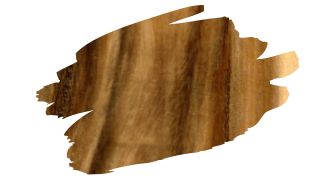Regardless of your personal culinary skill, every kitchen needs a good set of wooden cooking utensils.
Especially when a wide range of recipes often specifically state that you use wooden spoons to make them. So, having a wooden kitchen set could make all the difference in perfecting your next dish.
Now, on the face of it, one wooden spoon looks pretty much like any other. But, there are unique characteristics, to certain types of timber, that make them a little more suitable for cooking with.
And Acacia wood is one such timber.
So, in this post, you’ll learn why Acacia wood makes for such great cooking utensil material. You will also learn what you should be doing to help maintain your Acacia kitchen set.
And keep reading to discover why wood is a better material for a cooking spoon (compared to metal).

This post may contain affiliate links to products that we receive a commission for (at no additional cost to you). Learn more here.
Is Acacia Wood Really A Good Material For A Cooking Utensil?
Acacia hardwood is a naturally durable wood. Thanks to its rot-resistance, it can shrug off moisture without succumbing to wood rot.
That is because this timber has natural tree oils saturating it’s grain. And this oil helps to prevent moisture from being absorbed by it.
But, Acacia wood isn’t as hard-wearing as say Teak wood, (which is in a league of its own when it comes to durability). And, unlike Teak wood, Acacia will always need a wood finish to help to protect it from decay.
Yet as a cooking utensil, (or even as a cutting board), this tree’s lumber makes long-lasting spoons and spatulas.
Related Post: What’s The Real Difference Between A Teak Vs Acacia Cutting Board?
But Is It Safe To Use Acacia Wood As A Wooden Spoon?
Acacia sawdust — like all sawdust from most any other type of wood — is a sensitizer. So, if you inhale it, it can cause respiratory problems. And, in some cases, it can even cause allergic skin reactions.
However, in its natural solid state, most species of Acacia wood, (of which there are over 1300 and counting), are not harmful. And Acacia wood is a food safe surface, safe enough to come into direct contact with your food.
Related Post: Can You Apply Teak Oil On Acacia Wood?
But Why Use Acacia Wood? Why Not Simply Use Metal As A Cooking Utensil Material?
There are two very good reasons to use wood for a spoon;
1). Heat Transfer:
Wood doesn’t transfer heat like metal does. In fact, metal transfers heat so well that some recipes will specify that you only use a wooden spoon.
2). Scratches And Abrasions:
Some recipes require you scrape food, (such as fond), off the bottom of a pan. And in those cases, you definitely want to be using a wooden spoon to do so.
But, using a metal spoon will only end up scratching up your pan.
Related Post: Acacia Vs Maple Cutting Boards (4 Key Pros And Cons)
And What’s The Best Way To Take Care Of An Acacia Wooden Spoon?
Acacia wooden utensils will need a regular application of mineral oil to safe guard them.
All of that soapy water, (when you wash them), will dry out Acacia wood. And in the worst case scenario, that spoon will begin to splinter and crack.
However, pure 100% food grade mineral oil will prevent this from happening to your utensils. That’s why every 1-3 months, you should saturate your Acacia cooking utensils in food grade mineral oil.
And Is Food Grade Mineral Oil Safe to Use?
It’s a perfectly food safe oil finish. Which is why mineral oil is the go-to wood sealer for finishing cutting boards, butcher blocks and wooden spoons.
You see, food grade mineral oil comes from petroleum distillate. Except, unlike other petroleum-based products, food grade mineral oil is highly filtered and refined.
In fact, it is so well refined, that it’s even safe for human consumption. Which is why this oil can be widely found at local pharmacies, and is sold as a laxative.
However, when it comes to wood finishing, this non-drying oil finish will coat the wood fibers of Acacia timber. This, in turn, prevents water from soaking right down into Acacia hardwood.
What Is A Non-Drying Oil Finish? Non-drying oil finishes like mineral oil do not dry, cure or harden into a durable film coat. While drying oil finishes, such as Linseed oil and Tung oil, will dry and cure into a hard coat.
To Sum Up, Here Are The Three Key Takeaways From This Post…
- 1). Acacia wood is naturally resistant to rot, and is a durable hardwood.
- 2). In its natural solid wood form, it is safe enough to come into direct contact with food.
- 3). Acacia wood cooking utensils still need maintenance. And a regular application of food grade mineral oil (every 1-3 months) will safe guard your Acacia wood utensils.
References:
Bjorn M.Hausen PhD | Contact Allergy To Woods | Department of Dermatology, University Hospital, University of Hamburg, Hamburg, West Germany
Rahman, Md Rezaur, et al. “Introduction of various types of Acacia wood.” Acacia Wood Bio-composites. Springer, Cham, 2019. 1-21.

